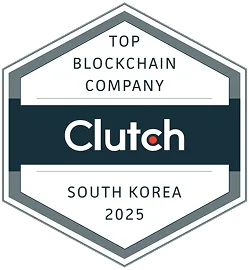Step-by-Step Guide: NFT Marketplace Development from Scratch

How to Create NFT Marketplace from Scratch.
Non-fungible tokens have skyrocketed in popularity over the last few years. Most users buy NFTs on dedicated marketplaces, similar to how they might buy conventional cryptocurrencies on an exchange. Rock’n’Block uses leading technologies to build NFT marketplaces enriched with new unique features that create exceptional user journeys and opportunities. In this article, we will dive into everything you need to know about development and launch of NFT Marketplace from Scratch!
NFT Marketplace Types
An NFT marketplace is a blockchain-based online platform to sell and buy NFTs. The opportunity of trading unique digital assets unites all NFT stores. But the details may vary, depending on the platform: NFTs range from art- or game-related collectibles to metaverses and utilities. So do the NFT trading platforms.
NFTs proved to be big business for big brands last year. Luxury brands (Gucci, Dolce & Gabbana), professional sports leagues (NBA Top Shots), and food and beverage companies (Starbucks) alike all hopped aboard the NFT hype train. And everything we’ve seen this year hardens the conviction in the NFT space and its potential moving forward.
Let’s talk numbers now:
Though the boom of NFT happened in 2021, the NFT market still remains hot, and we are beginning to see mainstream adoption.
The NFT marketplaces’ trading volume is about $38.7B. And if we have a look at the latest statistics, we’ll notice signals that herald the beginning of a new wave and revival of NFTs. The number of returning buyers keeps growing along with the number of sales.

Source: Nansen - NFT Trends & Indexes
Given their non-fungible (and thus, highly illiquid) nature, the size of the NFT market is hard to assess. The best estimate comes from the team at NFT Valuations.
They peg the current NFT market cap at about $11.5-14.5 billion, with two-thirds of that coming from profile picture (“PFP”) collections like Crypto Punks and Bored Apes.

Yes, the market may have seemed to be at a low point last few months. And some were claiming that NFTs were just a fad during 2021 and it’s now time to move on. But as we can see from the general statistics growth in Q1 2023, NFT Winter was only temporary. So lift your spirits, gather your strength, and let’s get ready for the NFT Spring! Well, let’s start with diving into the NFT Marketplace launch solution.
How to Create an NFT Marketplace in 3 Steps
Launching an NFT Marketplace is a complicated process, that requires knowledge of technological aspects and development nuances. Rock’n’Block team is working really hard to deliver you the best result by keeping your convenience in our mind. Thus, we’ve optimized the development process to make it less time-consuming and exhausting for you.
Let’s review the 3 major steps in NFT marketplace development with our team.
1. Choose Segment for your project
You can pick between Collectibles, Gaming, Art, Metaverses or Utilities. Remember that Collectibles are historically the most active segment in the industry, but also the most speculated about. In terms of the volume of dollars traded, the Collectibles segment always remains largely dominant.
It’s not obligatory to stick to only one NFT segment. But you can provide users with a more personalized user experience and help them find the NFTs they are interested in much quicker by defining your niche.
2. Choose the blockchain platform where to launch your NFT Marketplace
When embarking on the journey of NFT marketplace development, selecting the right blockchain is pivotal. The blockchain you choose forms the foundation upon which your NFT marketplace will thrive. In this comprehensive guide, we delve into the critical criteria for blockchain selection, ensuring that your project is set up for success. Let's explore each criterion in detail, considering the needs of those looking to build their own NFT marketplace from scratch.
Explore the top 5 blockchains for NFT marketplace development in our recent post. Learn about NFT marketplace development on Ethereum, BNB Chain, Arbitrum, Polygon, and Avalanche.
3. Decide which Functionality of NFT Marketplace to Start With
There are some fundamental features required for even the most basic NFT Store development:
- User Profile: Registration, Editing, Portfolio, and Activities traction for the users'
- Browsing, Sorting and Search features to help users find a required non-fungible token fast and allow them to discover listed collections.
- Buying, Selling and Biding on NFT items.
- Creation of NFT Collections
You can always boost your NFT marketplace with more advanced features and functionality.
4. Choose a Business Model to Monetise your NFT store
- Listing Fees
Marketplace sets a fee for sellers for posting (listing) their NFT assets and collections.
- Bidding Fees
Marketplace charges buyers a fee for successful bids on the digital asset
- Setup Fees
Marketplace charges content creators to list their first non-fungible token.
- Transactions Based Charges
Marketplace takes a percentage from every transaction on the platform.
- Affiliate programs
Some NFT trading platforms may introduce specific affiliate programs for their partners.
With a professional development team behind the project, these three steps will be the hardest decisions for you to make. Our team will handle everything else.

The Ultimate NFT Marketplace Development
NFT trading platforms keep appearing day by day. According to dAppRadar there are over 80 NFT Marketplaces already. In such a competitive area, it’s better to make sure that your Marketplace is the one that stands out. And while the above-mentioned list of must-have features may help you gain a foothold on the market, it won’t distinguish your NFT marketplace from numerous projects.

However, there are some optional but preferable features that could attract more users’ attention to your NFT store:
- Ratings and Recommendations Features
Allow users to rate sellers, collections or pieces and leave feedback.
- Administration Functionality
Manage the marketplace, commissions, and contracts.
- Likes and Following Features
These features are bringing the marketplace to the social platforms allowing the user to user interactions and engagement between creators, buyers, and collectors
- Traits-based Art Generator Development
Allows the creators to generate and deploy 10,000 NFT collections right in the marketplace.
- Mint of Mystery boxes
The applied logic for auction and reveal Expansion of the collection types and wider opportunities for creators to publish and monetize their project
Comprehensive list of features for NFT Marketplace Development
There is no doubt that NFT marketplace development is hyped up. And it’s inevitable that anything that generates impressive profits and becomes immensely popular will face some challenges. One of the biggest challenges you’re facing when launching an NFT Marketplace is to offer the best User Experience. To overcome this issue add unique features for prominent audience engagement and user experience, and implement your unique UX patterns.

There are a few tips on how to make your NFT store an ultimate one-stop solution for all kinds of traders:
- Audio / Video Clips support
Support of wider content types will allow us to reach and create a wider community of creators and users.
- Multi-Chain Support
Reach a bigger audience and provide the creators with the freedom to choose the blockchain for the launch.
- NFT Launchpad integration & Airdrop Service
Connect investors, creators and projects attracting audiences in the early stage of the project launches - INO
- Fraction NFTs protocol Development
Allow the creators to attract more liquidity to their artwork through fractionalizing their NFTs.

Under the Hood of NFT Marketplace Development
With all options explored, now let’s dive into a more detailed process of a NFT platform development
The first things to be determined are Technical specifications, General Requirements, and Design, particularly:
- Business and system analysis
- System requirements definition
- System architecture design
- Technical specifications formulation and syndication
When all the briefings are done, and special requirements are settled, you can start to discuss a UI/UX Design. This process includes the following steps:
- Preparation stage: competitive analysis, target audience analysis, mood board creation
- Platform structure design
- Design concept creation
- Design of each page and components
- Adaptive design
- UI kit creation
The Development process includes 4 stages:
- Turn key development of the project in accordance with the technical specifications and requirements defined in stage 1.
- Frontend development
- Backend & DevOps
- Smart Contracts development
The next stage is imparted with enormous significance - Quality assessment:
- Testing layout for compliance with design layouts for all devices and screen resolutions
- Testing the correct operation of the functionality
- User behavior testing
- Integration testing
- Testnet Full Functional Delivery for approval
- Presentation of the system to the client
- Feedback collection
And finally! Mainnet release:
- System transition to mainnet networks and production
- Support and Maintenance
- Provision of the bug fix within 4 months after project delivery as a guaranteed
time frame - Availability of the team to pick up system maintenance as an additional service
- Creation of guidance and consultations on the in-house team,
as an additional service.
If you are looking to know more on how to launch an NFT marketplace with Rock’n’Block project, get in touch with their managers for project assessment major objectives and deliverables formulations to get a solution that will meet your project goals: contacts
Conclusion
NFTs are everywhere! We can see strong moves from legacy brands and non-crypto tech companies looking to integrate NFTs into their platforms. Reddit launched a collectible avatar program, which has onboarded 3 million unique users. Meta is creating an NFT marketplace that will be integrated into the Facebook and Instagram platforms.
Companies launch NFTs, using them as an innovative way to foster customer loyalty by extending unique privileges to NFT holders. Most likely, we’ll continue to see more experimentation with NFTs this year, meaning that the NFT Marketplaces will be in demand. Rock’n’Block team will help you define a stand-out creative direction for your own NFT Marketplace and will translate it into visual assets that will resonate with your audience.
Since 2017 Rock’n’Block has developed 300+ solutions of different complexity. Hence, the Rock'n'Block project is backed by an experienced team of professionals who will bring your ideas to life in a seamless and effortless manner!

We❤️Development
Rock⚡️Block
Follow us on social media to receive the hottest blockchain development updates
Crunchbase ⚡️Twitter ⚡️Telegram⚡️LinkedIn⚡️Facebook⚡️Instagram













%201.webp)



